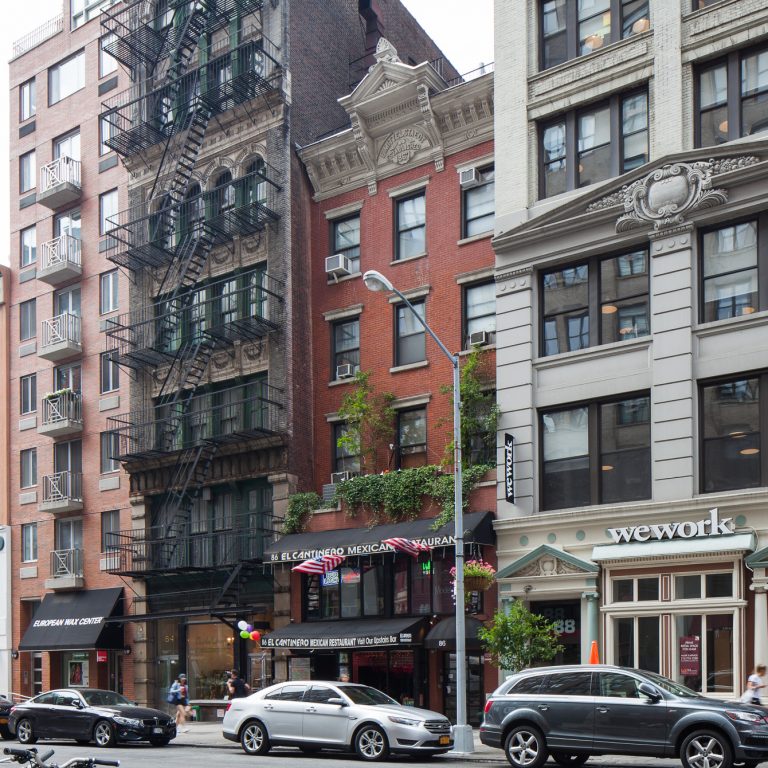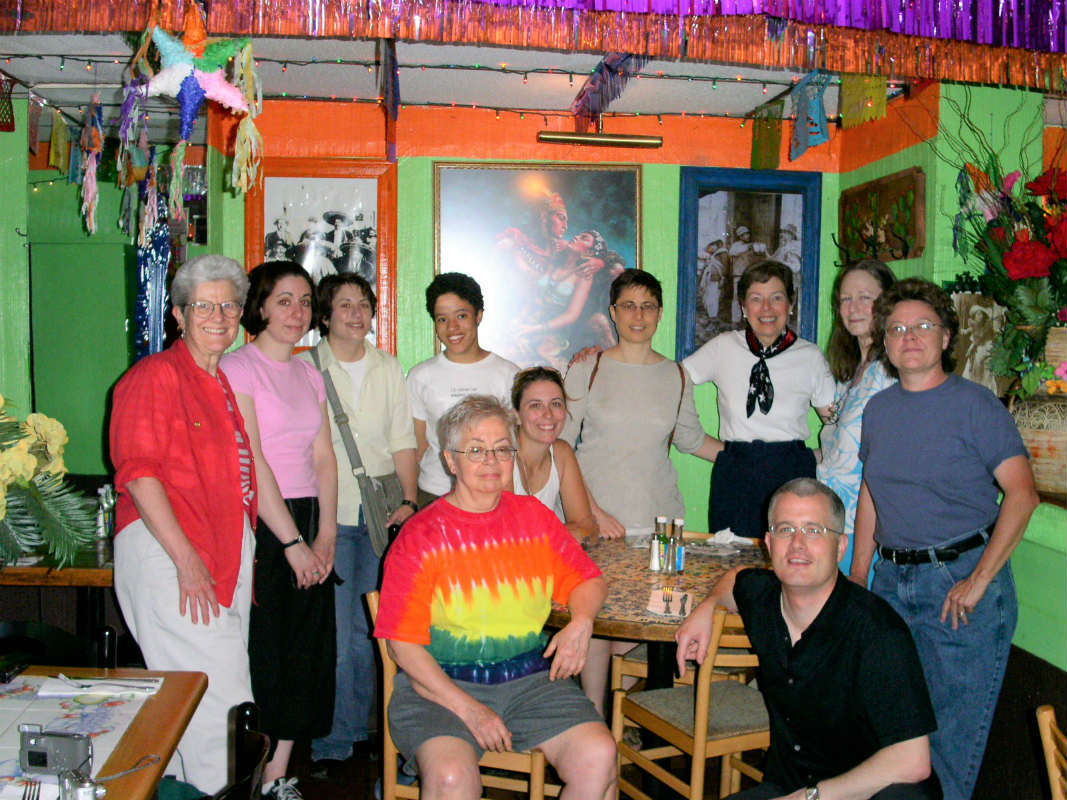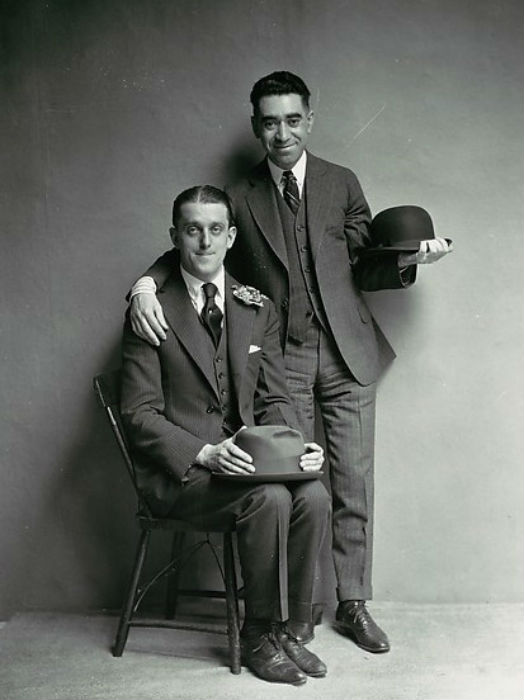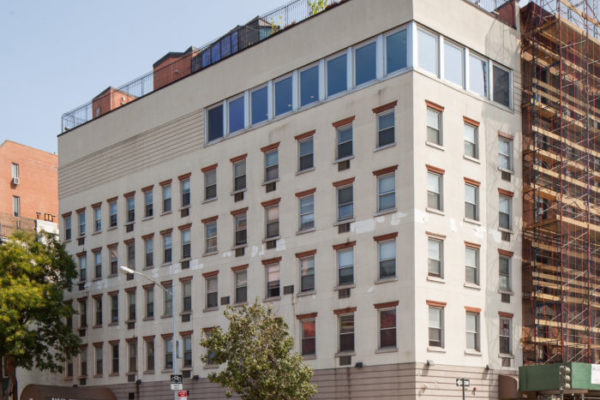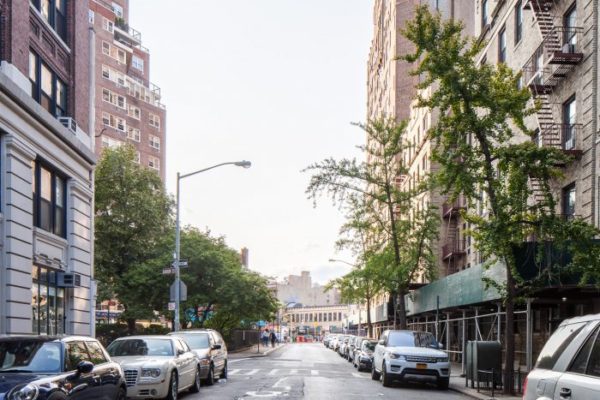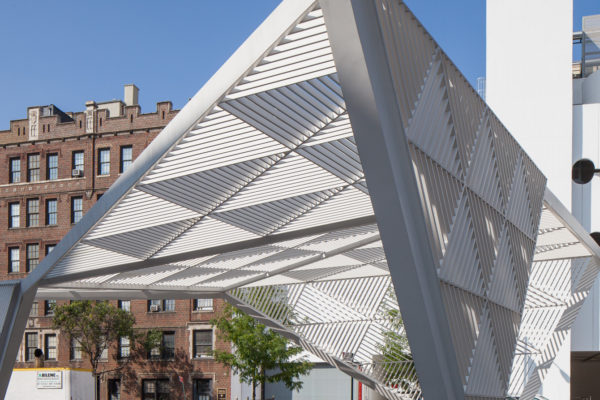overview
Remembered by author Ann Bannon and writer/activist Audre Lorde, the Bagatelle, or “the Bag,” was a popular lesbian bar from 1952 to 1959.
Like other gay and lesbian bars in Greenwich Village at the time, it was Mafia-run and frequently raided by the police.
On the Map
VIEW The Full MapHistory
In the 1930s, Barney Gallant, a lifelong bachelor, ran a lively restaurant at 86 University Place.
“Danny’s Bagatelle” opened at this location on Friday, December 28, 1951, and had a similar atmosphere to Gallant’s establishment with a floor show for at least the first six months of the restaurant’s existence. It soon became a lesbian hangout, however, dropping the “Danny’s” from its name, closing the second-floor banquet space, and transforming the back candle-lit dining room into a dance floor.
The Bagatelle, or “the Bag,” remained one of the most popular lesbian bars in Greenwich Village throughout the 1950s, and was especially a favorite among white, working-class women who adhered to butch/femme gender roles. [For an explanation on butch/femme, see the entry on the Sea Colony]. Most pre-Stonewall gay and lesbian bars were run by the Mafia and frequently raided by the police, and the Bag was no different. Ann Bannon, a 1950s lesbian pulp fiction author, explained that a raid was likely imminent if one had not happened within the last month.
The first thing you wanted to know when you walked in was ‘when was your last raid?’
The small (24’ x 98’) first floor that the Bagatelle occupied was split up into two main spaces – a bar in the front, and what Black lesbian feminist, writer, and activist Audre Lorde described as a “postage-stamp”-sized dance floor in the back. Much like at the Sea Colony, a contemporary lesbian bar, a red light would go on when the police arrived for a raid and everyone would stop dancing in the hopes of not being arrested for the crimes of dancing with a same-sex partner, not dressing feminine enough, or “disorderly conduct,” which was interpreted very loosely.
Although the Bagatelle was one of the few spaces at the time where lesbians could gather, Black lesbians, in particular, were not always welcome. Lorde describes always being carded at the door, though her white friends never were:
It was the most popular gay-girl’s bar in the Village, but…the bouncer was always asking me for my ID to prove I was twenty-one… Of course ‘you can never tell with Colored people.’
Lorde also described the mixed relationship the patrons had with the Mafia bouncers, who were meant to protect them, but often were a threat in themselves. Lorde remembers, “I walked down those three little steps into the Bagatelle on a weekend night in 1956. There was an inner door, guarded by a male bouncer, ostensibly to keep out the straight male intruders come to gawk at the “lezzies,” but in reality to keep out those women deemed ‘undesirable.’ All too frequently, undesirable meant Black.”
The Bagatelle closed in 1959 and was replaced by Dardanelles Armenian Restaurant.
Entry by Gwendolyn Stegall, project consultant (July 2018).
NOTE: Names above in bold indicate LGBT people.
Building Information
- Architect or Builder: Unknown; William Graul (cornice and raised roof); George Dress (storefront)
- Year Built: by 1846; 1889-90 (cornice and raised roof); 1920 (storefront)
Sources
Ann Bannon, June 15, 2018, personal interview with Gwendolyn Stegall for the NYC LGBT Historic Sites Project. [source of Ann Bannon pull quote]
Audre Lorde, Zami: A New Spelling of My Name (New York: Crossing Press, 1982). [source of Audre Lorde pull quote]
Blair Chotzinoff, “Going Out Tonight?,” New York Post, January 7, 1952.
Cobb Tries Nitery Stint,” The Philadelphia Inquirer, June 15, 1952.
Esther Crain, “A Village eccentric’s popular 1920s speakeasy,” Ephemeral New York, June 23, 2016, bit.ly/2utmU9b.
Eugene P. Lambinus, “Table Topics,” The Villager, December 31, 1959.
New York City Directories (1951-1958).
On the Variety Stage,” New York Post, December 30, 1951.
Tom Miller, “The Mittelstaedt House – No. 86 University Place,” Daytonian in Manhattan, October 19, 2012, bit.ly/2Lt2CTt.
Do you have more information about this site?
This project is enriched by your participation! Do you have your own images of this site? Or a story to share? Would you like to suggest a different historic site?
